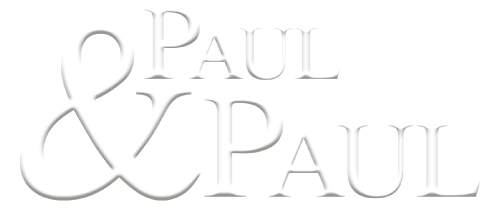The attorneys at Paul & Paul have extensive experience working with inventors, designers, and businesses who require an experienced patent attorney to apply to secure patent protection. With rapid expansion in the development of new products, it is critical for an inventor or business to protect their products and intellectual property.
Acquiring any patent, including a utility patent, can be a complex process. Paul & Paul has a team of lawyers who not only know the patent process but also have extensive backgrounds in a number of industries that gives them unique technical knowledge about what a utility patent protects, how they are different than design patents, and the other legal services required for protecting your intellectual property.
At Paul & Paul, we will guide you through the complex process of obtaining a patent for your idea, product, or invention. They will file the applications, work with the United States Patent and Trademark Office (USPTO), and ultimately protect you and your business from patent infringement. If you need a utility patent lawyer, contact Paul & Paul today for a consultation.

A utility patent is a government-granted right that protects the way an invention works or is used. It’s designed to encourage innovation by rewarding inventors with exclusive rights to their creations.
There are two primary types of utility patent applications in the United States:
Purpose: This is a simpler, less expensive way to establish an early filing date for an invention. It’s often used to secure a temporary patent pending while the inventor further develops the technology or seeks funding.
Key Points:
Doesn’t go through a full examination process.
Provides a one-year grace period to file a non-provisional application.
Can be a strategic tool for startups and inventors to protect their ideas without significant upfront costs.
Purpose: This is the formal application that, if approved, leads to the issuance of a utility patent.
Key Points:
Requires a detailed description of the invention, including drawings and claims.
Undergoes a rigorous examination process by the U.S. Patent and Trademark Office.
If patent approval is granted, it provides the inventor exclusive rights for 20 years from the filing date.
Paul & Paul’s experienced patent attorneys can guide you through the complex process, ensuring your invention is adequately protected.
The timeline for securing a utility patent can vary, influenced by factors like the invention’s complexity, USPTO backlog, and potential legal challenges. Typically, the entire process takes around 2-3 years.
Here’s a breakdown of the key stages:
Filing: Your attorney submits the provisional or nonprovisional patent application to the USPTO.
Examination: A patent examiner at the USPTO reviews the application for patentability (novelty, non-obviousness, and usefulness). This can take 12-18 months.
Office Actions: The USPTO may request additional information or clarification. Your attorney will respond to these requests.
Allowance or Rejection: The USPTO may allow the application, issue a final rejection, or request further details.
Issuance: If approved, the USPTO issues a patent certificate, granting you exclusive rights for 20 years from the filing date.
Even after a utility patent is granted, there are ongoing maintenance fees that must be paid to the USPTO to keep the patent active. These fees are typically due at specific intervals after the patent is issued. Failure to pay maintenance fees can result in the patent lapsing and becoming public domain.
If you believe someone has a similar invention or is infringing on your patent rights, you may need to take legal action. This could involve sending a cease-and-desist letter, filing a patent prosecution lawsuit, or seeking other remedies. It’s crucial to consult with a patent attorney to understand your options and potential legal strategies.
Licensing your patent can be a lucrative way to generate revenue. You can grant licenses to other companies to manufacture, sell, or use your invention in exchange for royalties or other fees. However, licensing agreements can be complex, and it’s advisable to work with a patent attorney to negotiate favorable terms.
If you want to protect your invention in countries outside the United States, you’ll need to file separate patent applications in each country or region. International patent law can be complex, and it’s essential to seek legal advice to navigate the process.
By understanding these post-patent grant considerations, you can effectively protect your intellectual property and maximize the potential value of your invention.
Paul & Paul’s experienced utility patent attorneys can navigate this complex process for you. Contact us today for a free consultation to discuss your invention and explore your patent protection options.
About Us
Contact Us
100 N. 18th Street, Suite 830
Philadelphia, PA 19103
Office: (215) 568-4900
Fax: (215) 567-5057
Email: info@paulandpaul.com
© 2023 All Rights Reserved | Paul & Paul